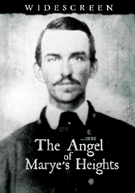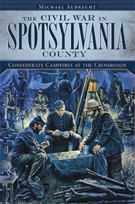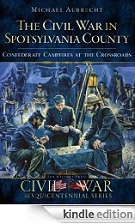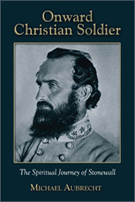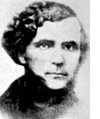 This will be the third, and perhaps last post before I start my new Technical Writer position with the U.S. Marshals. As I adjust to my commute, I hope to blog from the train via my Blackberry, but we’ll see how that goes. One of the many things that immediately impressed me about this outfit was their obvious dedication to preserving their own legacy. History really matters to the U.S. Marshals and the moment you enter their headquarters, you are greeted by a large statue of Wyatt Earp. At my panel interview, I was tested on my knowledge of the organization. Fortunately, I had prepped myself by spending some time on their website. Who knows? Maybe someday I'll write a book on the subject.
This will be the third, and perhaps last post before I start my new Technical Writer position with the U.S. Marshals. As I adjust to my commute, I hope to blog from the train via my Blackberry, but we’ll see how that goes. One of the many things that immediately impressed me about this outfit was their obvious dedication to preserving their own legacy. History really matters to the U.S. Marshals and the moment you enter their headquarters, you are greeted by a large statue of Wyatt Earp. At my panel interview, I was tested on my knowledge of the organization. Fortunately, I had prepped myself by spending some time on their website. Who knows? Maybe someday I'll write a book on the subject.
Much like the U.S. Marine Corps, the U.S. Marshals Service wants their people at every level to fully appreciate the history of those who came before them. As the oldest federal law enforcement agency in the United States, they have apprehended more fugitives than all other law-enforcement agencies combined. As a historian, I love the fact that this group embraces their heritage and goes to great lengths to instill the same values of those who came before them. The list of noteworthy U.S. Marshals is a long one and includes familiar names such as Wyatt Earp, Wild Bill Hickok, and even Frederick Douglass (I never knew that.) Two Confederate Generals also wore the silver-star, Benjamin McCulloch, U.S. Marshal for Eastern District of Texas; who became a brigadier general, and Richard Griffith, who was mortally wounded at the Battle of Savage's Station during the 1862 Peninsula Campaign.
Griffith is a particularly interesting character in southern Civil War history as he was originally from Pennsylvania. He was born in Philadelphia and graduated from Ohio University before moving to Vicksburg, Mississippi. During the Mexican War, Griffith served as an infantryman with the 1st Mississippi Rifles. It was there where he met and became close friends with an up-and-coming colonel named Jefferson Davis. After the war Griffith left the army for civilian life and worked as both a banker and a U.S. Marshal. He also held the rank of brigadier general in the Mississippi State Militia.
At the outbreak of the War Between the States, Griffith sided with the Confederacy and was immediately appointed as a colonel in the 12th Mississippi Infantry. One year later he was promoted to brigadier general and put in command of four Mississippi regiments that became part of Maj. Gen. John B. Magruder’s division. Griffith saw action at the Seven Days Battles near the Confederate capital of Richmond. During that engagement he was mortally wounded in his thigh by a shell fragment. As he died he was recorded to have said, “If only I could have led my brigade through this battle, I would have died satisfied.”
According to his bio: The loss of General Griffith was much lamented by many, including his long-time friend Jefferson Davis. Of the fighting at Savage Station he wrote, “Our loss was small in numbers, but great in value. Among others who could ill be spared, here fell the gallant soldier, the useful citizen, the true friend and Christian gentleman, Brigadier General Richard Griffith. He had served with distinction in foreign war, and, when the South was invaded, was among the first to take up arms in defense of our rights.” Later in the war, a group of soldier-musicians called “The McLaws Minstrels,” serving under Lafayette McLaws and formerly under General Griffith, would play at a theater in Fredericksburg. They charged a modest admission fee, the proceeds from which were used to erect a monument in the Mississippi State Capitol in honor of their fallen commander.
Today, Brig. Gen. Richard Griffith is buried in Greenwood Cemetery in Jackson, MS.
Updated: Monday, 19 October 2009 12:56 PM EDT
Permalink | Share This Post
